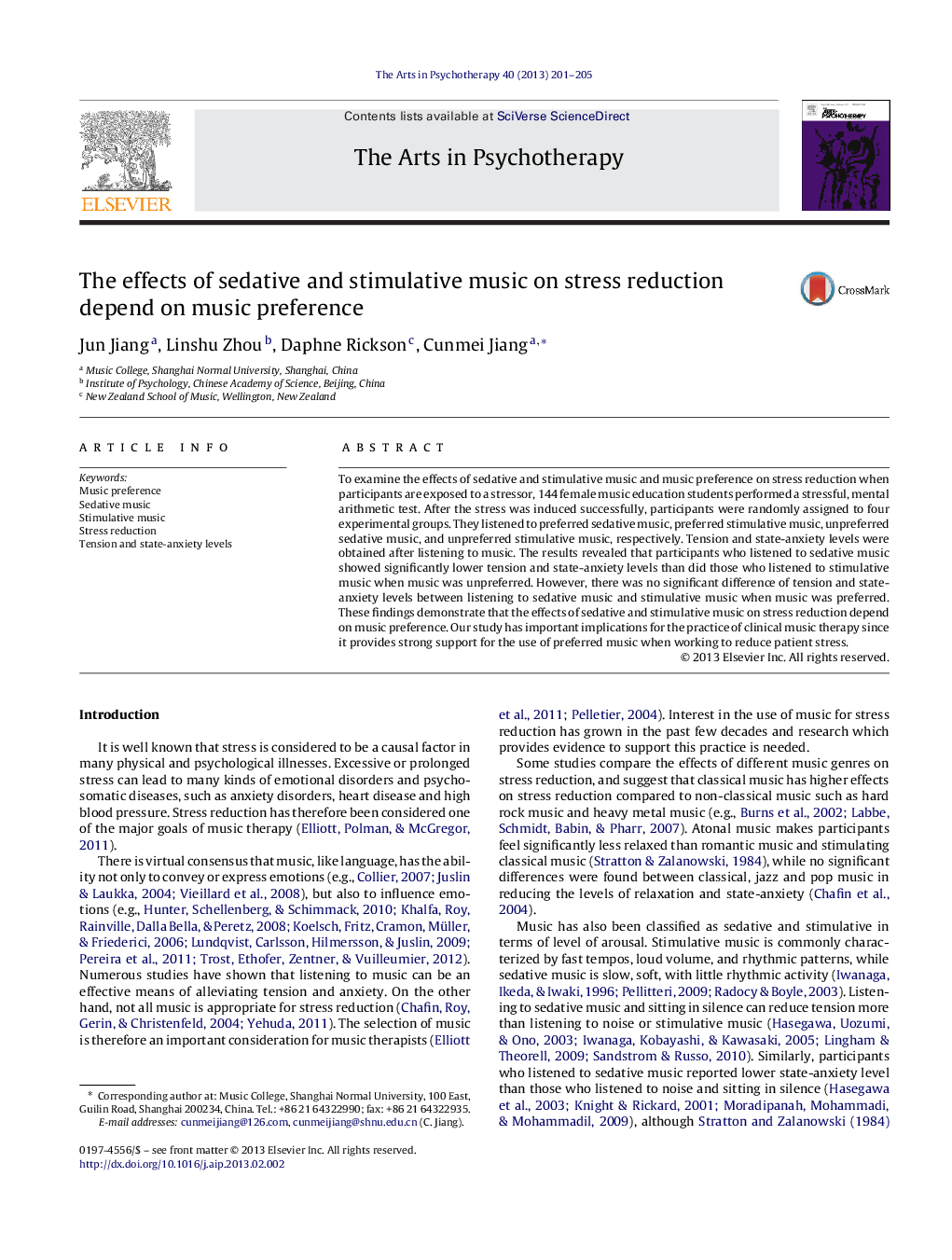| Article ID | Journal | Published Year | Pages | File Type |
|---|---|---|---|---|
| 343709 | The Arts in Psychotherapy | 2013 | 5 Pages |
To examine the effects of sedative and stimulative music and music preference on stress reduction when participants are exposed to a stressor, 144 female music education students performed a stressful, mental arithmetic test. After the stress was induced successfully, participants were randomly assigned to four experimental groups. They listened to preferred sedative music, preferred stimulative music, unpreferred sedative music, and unpreferred stimulative music, respectively. Tension and state-anxiety levels were obtained after listening to music. The results revealed that participants who listened to sedative music showed significantly lower tension and state-anxiety levels than did those who listened to stimulative music when music was unpreferred. However, there was no significant difference of tension and state-anxiety levels between listening to sedative music and stimulative music when music was preferred. These findings demonstrate that the effects of sedative and stimulative music on stress reduction depend on music preference. Our study has important implications for the practice of clinical music therapy since it provides strong support for the use of preferred music when working to reduce patient stress.
► Listening to unpreferred sedative music results in significantly greater stress reduction than listening to unpreferred stimulative music. ► There is no significant difference of stress reduction between listening to preferred sedative music and preferred stimulative music. ► We demonstrate that the effects of sedative and stimulative music on stress reduction depend on music preference.
